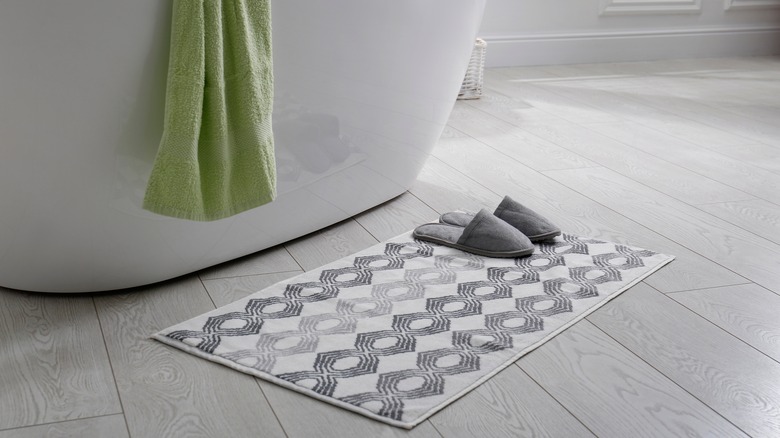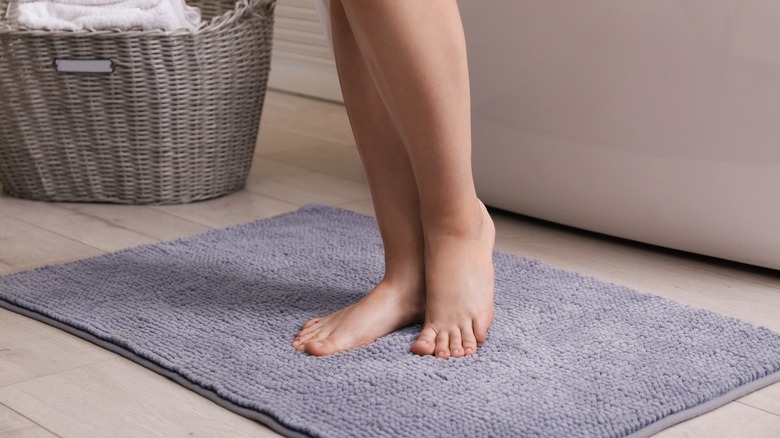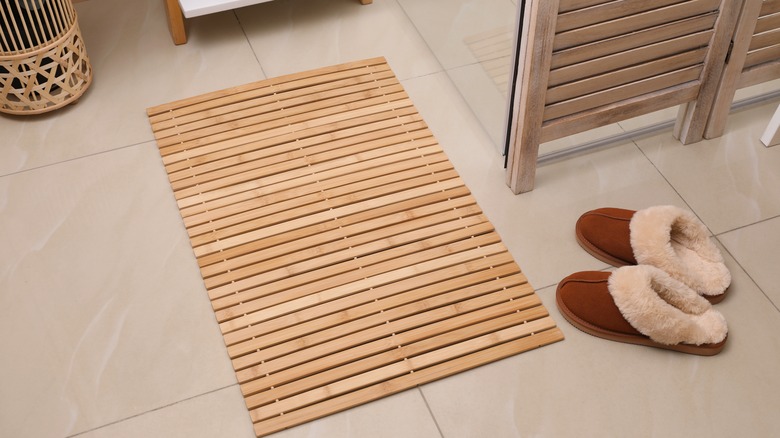You Might Want To Think Twice Before Putting A Rug In Your Bathroom
One of the recommended ways to upgrade a bathroom space is to invest in nice linens, from hand cloths to bath towels to shower mats. And while these mats can brighten up your bathroom with fun colors, textures, or patterns, they also come with their fair share of issues.
Because they are on the ground, we often think of bathroom rugs and mats like we would a rug elsewhere in our home — only in need of occasional sweeping or vacuuming, maybe a deep clean every year or so. But that isn't the case because unlike rugs in other parts of the home, bath mats spend a lot of time in a moist environment, and while they do a great job of holding onto water when you step out of the shower, they also have a hard time letting it and other substances go. This can easily lead to bacteria and mold, which is the last thing you want growing in a space dedicated to good hygiene.
The problem with bath mats
If you've ever left a damp rag in a hamper and noticed a bad smell a few days later, you already know that mold, mildew, and other bacterial growth have attached itself to the fabric. And they are not pleasant. Bath mats are even more prone to bacterial growth than a regular cleaning cloth for several reasons. Consider that bath mats are on the ground while you do all of your bathroom business, including flushing the toilet, trimming toenails, and flossing food particles from your teeth — all of these things, as well as urine, fecal matter, and other debris can easily get onto the bath mat's fibers.
Suddenly, your bath mats might not seem like a nice warm pillow to step on after a shower. Associate clinical professor of dermatology at Yale School of Medicine Dr. Mona Gohara says it best: "Damp, moist, and dirty is like Disneyland for fungus and yeast" (via Wirecutter). Mold and mildew aren't just gross because they smell bad but because they can cause serious health conditions. Consistent exposure to mold and mildew particles can cause respiratory issues, as well as headaches and fatigue (via the State of Rhode Island Department of Health).
Mind the material
Just as maintenance and regular cleaning can help you keep your bath rug in great shape, you also need to be mindful of what material the rug is made out of. Sure, you may have found a vintage rug that would match beautifully with your shower curtain, but the chances are that its fabric isn't suited to being consistently wet, which can also be a cause for mold. Some fabrics are more prone to mold and mildew, such as wool, as well as other types of animal-related products and materials that cannot be machine-washed.
If you're ready to skip the fabric rugs altogether but still want something other than the floor to stand on after showers to prevent water splashing and slip hazards, consider a bathmat alternative. Options include slatted bamboo boards, stone slates, cork, and more. The important thing is finding something that will stop water from dripping everywhere, isn't susceptible to mold or mildew, and isn't so smooth that you might slip on it while wet.


